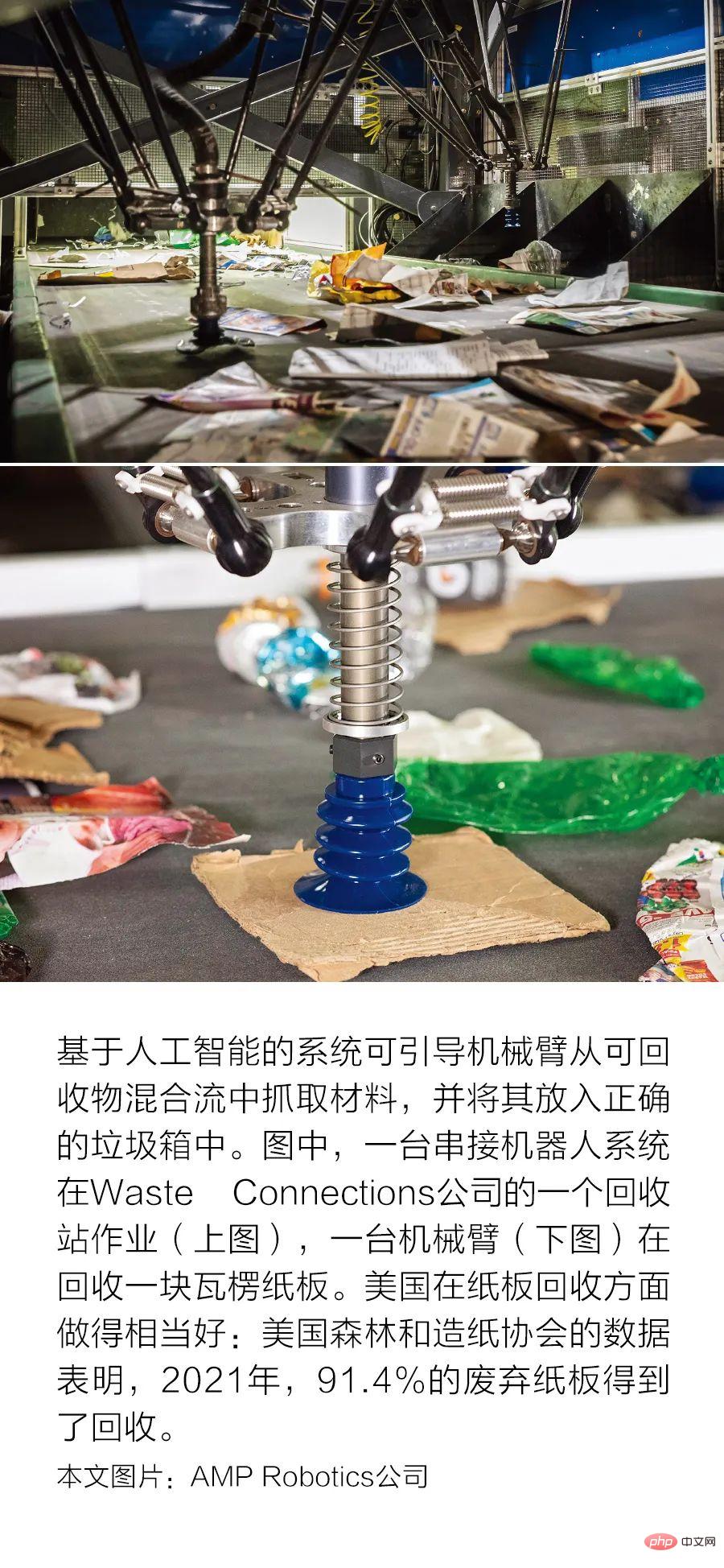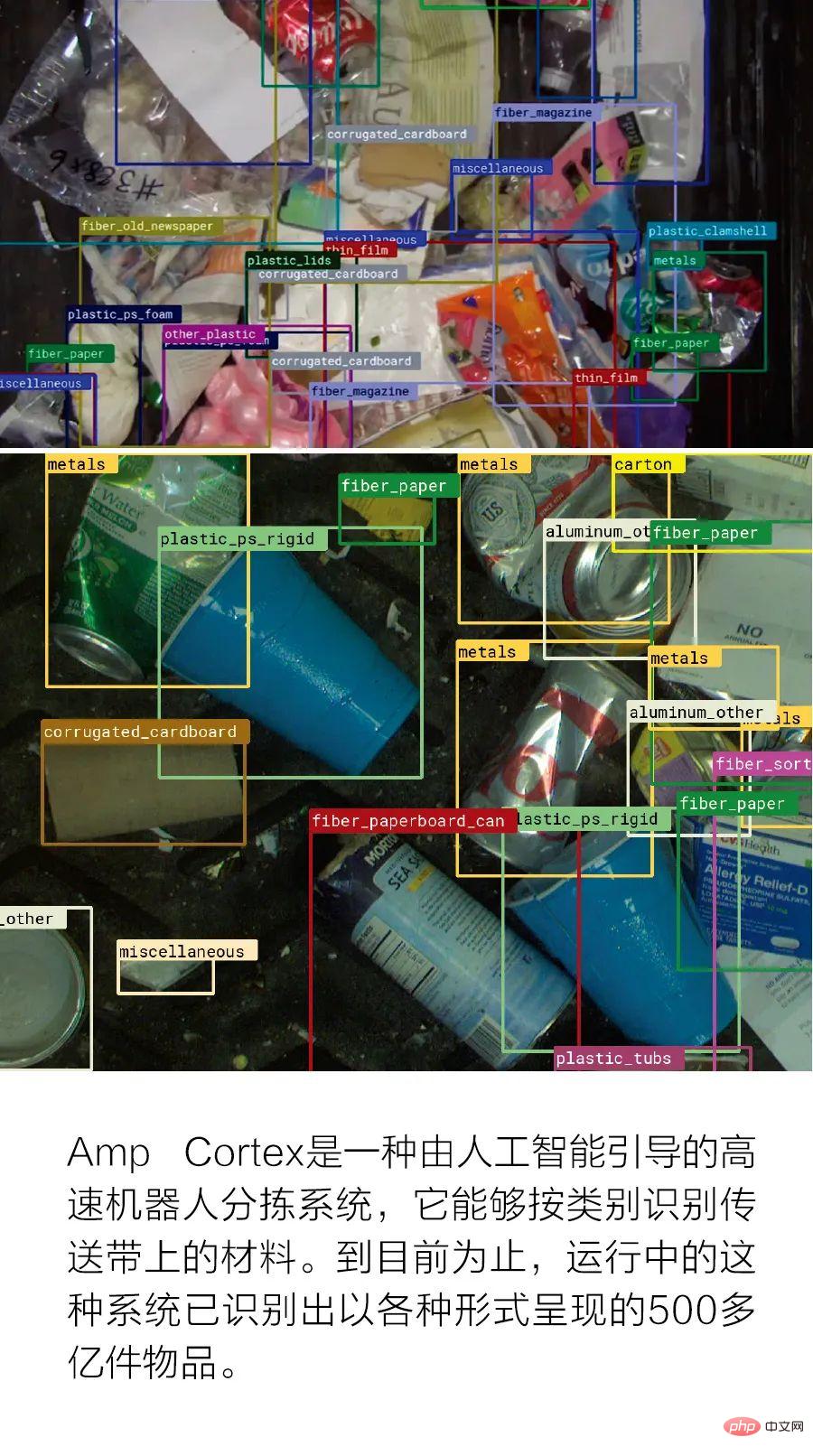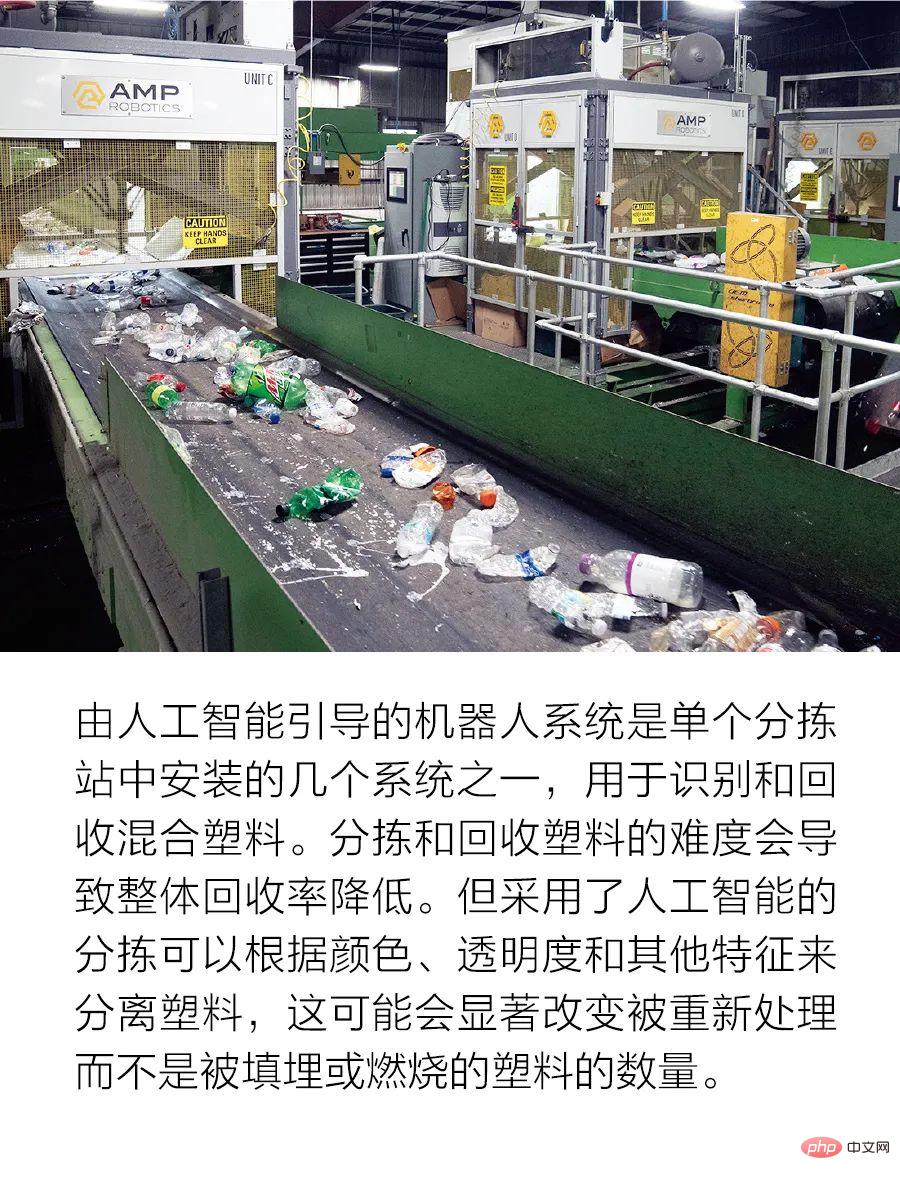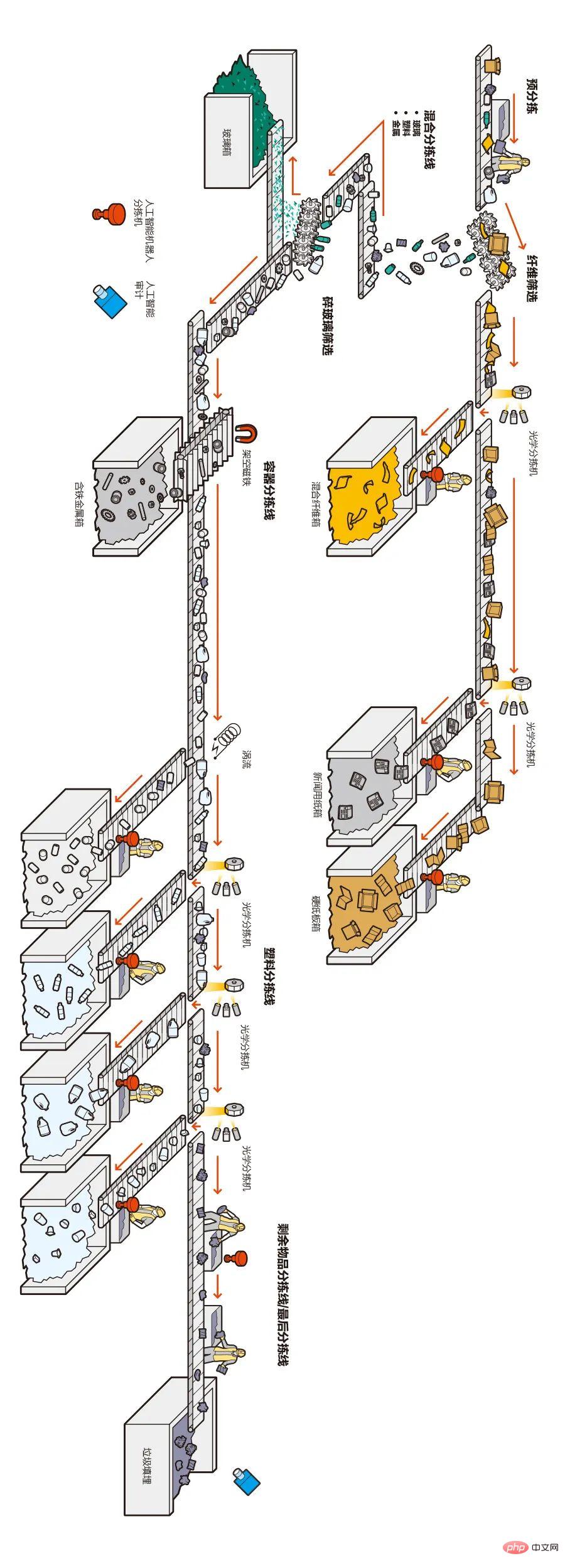
It’s Tuesday night and the big blue bin in front of your house is filled with newspapers, cardboard, bottles, cans, foil trays and empty yogurt cups. You might feel like you’re doing something awesome and doing your part to reduce waste. But once you rinse the yogurt cup and throw it in the trash, you'll probably never think about it again.
In many parts of the United States and much of Europe, the truth about recycling is sobering. The next morning, the contents of the recycling bin will be dumped into a truck and taken to a recycling depot for sorting. Much of the material will be processed and ultimately used in new products. But a lot of it ends up as waste in landfills.
So, how much of the materials that go into regular bins can be kept out of landfills? While there is no widely available data, in countries with facilitated recycling this figure (called the "recycling rate") averages around 70% to 90%. This result doesn't seem bad. But recycling rates in some cities can be as low as 40%.
Worse yet, only a small percentage of recyclables make it into the bin, only 32% in the United States and only 10 to 15% globally. That is, a lot of materials made from limited resources are unnecessarily wasted.
We must do better. The recycling industry is currently facing a financial crisis due to falling prices for sorting recyclables and China’s 2018 policy restricting the import of many recycled materials and shutting out most recyclables originating in the United States.
There is a way to help us do better. Using computer vision, machine learning, and robots to identify and sort recycled materials, we can improve the accuracy of automated sorters, reduce the need for human intervention, and increase overall recycling rates.
Our company, Amp Robotics, headquartered in Louisville, Colorado, is developing software and hardware to sort recyclables that rely on image analysis to achieve a high level of accuracy and higher recovery rates than traditional systems. Other companies are taking a similar approach, applying artificial intelligence and robotics to recycling, such as Bulk Handling Systems, Machinex and Tomra. So far, hundreds of sorting stations around the world have adopted this technology. Expanding their use prevents waste and helps the environment by keeping recyclables out of landfill, making them easier to reprocess and reuse.
Before looking at how artificial intelligence will improve recycling, we can take a look at how recycling materials were sorted in the past and how they are sorted in most parts of the world today.
Recycling began in the 1960s, when consumers were required to sort, such as putting newspapers in one bundle, cardboard in another, and putting glass and cans into separate bins. This proved to be too cumbersome for many people and limited the amount of recyclable material that could be collected.
In the 1970s, many cities eliminated multiple bins and replaced them with a single bin, with sorting taking place downstream. This “single stream” approach to recycling has increased participation and is now the dominant form of recycling in developed countries.
Moving the sorting task further downstream has led to the construction of sorting stations. For accurate sorting, recycling entrepreneurs retrofit mining and agricultural equipment, supplemented by manpower when necessary. These sorting systems do not use computer intelligence, but instead rely on the physical properties of materials to separate them. For example, break glass into small pieces, then sift and collect them. The cardboard, which is both stiff and light, slides on a series of mechanical cam discs, while other, denser materials fall between the discs. Magnetism can be used to separate ferrous metals from other materials; large eddy currents can also be used to induce magnetism in non-ferrous metal items such as aluminum.
In the 1990s, hyperspectral imaging technology developed by NASA and first launched on a satellite in 1972 became commercially viable and began to appear in the recycling field. Unlike the human eye, which primarily sees a combination of red, green, and blue, hyperspectral sensors are able to divide images into more spectral bands. The technology is transforming the recycling industry by being able to differentiate between different types of plastic, bringing optical sensing and computer intelligence into the recycling process. In addition, programmable optical sorters have been developed to separate paper products, for example, from newspapers to junk mail.
Therefore, most sorting is currently automated. The sorting purity of these systems is typically 80 to 95 percent, meaning that 5 to 20 percent of the recycle material should not be present. However, for recycling to be profitable, sorting purity must be above 95%; below this threshold, its value decreases and is often worthless. As a result, humans manually clean up individual workflows, picking out incorrectly sorted items before the materials are compressed and packaged for shipping.
Despite automated and manual sorting, approximately 10% to 30% of materials entering sorting stations end up in landfill. In most cases, more than half of this material is recyclable and valuable, but it just slips through the cracks.
We have pushed our existing systems to their limits. Only artificial intelligence can do better.
Bringing artificial intelligence into the recycling business means combining pick-and-place robots with precise, real-time object detection. In manufacturing, pick-and-place robots coupled with computer vision systems are used to grasp specific objects, but they typically only repeatedly find a single item or a small number of items of known shape under controlled lighting conditions. However, the items involved in recycling move down the conveyor belt with infinite variations in type, shape and orientation, requiring almost instant identification and rapid assignment of new trajectories to the robotic arm.

# In 2016, our company first used artificial intelligence to pick up empty cardboard boxes from other recyclables at a sorting station in Colorado; today , we have installed this system in over 25 U.S. states and 6 countries. While we are not the first company to experiment with artificial intelligence sorting, the technology has not been commercially available before. We have steadily expanded the types of recyclables our systems are able to identify and sort.
In theory, artificial intelligence could recover all recyclables from mixed material streams with close to 100% accuracy, based entirely on image analysis. AI sorting systems can accurately sort items as long as they can see them.
Take high-density polyethylene (HDPE), a plastic commonly used in detergent bottles and milk jugs, which is particularly challenging for current recycling sorters. . (HDPE products are listed as the second most recyclable in the United States, Europe, and China.) In systems that rely on hyperspectral imaging, batches of HDPE are often mixed with other plastics and may have paper or plastic residues tags, making it difficult for hyperspectral imagers to detect the chemical composition of their underlying items.
In contrast, an artificial intelligence-driven computer vision system can determine whether a bottle is made of HDPE by identifying its packaging. Such systems can also leverage attributes such as color, opacity and form factor to improve detection accuracy and can even sort by color or specific products, reducing the amount of reprocessing required. While the system doesn't try to understand the meaning of the text on the label, the text is part of the item's visual properties.
Our company Amp Robotics has built a system that can perform this kind of sorting. In the future, AI systems could also sort by material combination and original use, separating food-grade materials from containers of household cleaners and paper contaminated by food waste from clean paper.

#Training a neural network to identify items in the recycling stream is no easy task. It's at least several orders of magnitude more difficult than identifying a face in a photo, because recyclable materials have an almost infinite variety of deformations that the system must recognize.
Training a neural network to identify all the different types of laundry detergent bottles on the market today is difficult enough, but taking into account the physical deformation these items may undergo by the time they reach the recycling bin is another. Completely different challenge. They may be folded, torn or crushed. When blended into a stream of other items, we may only be able to see a corner of the bottle. Liquid or food waste may also obscure its material.
We trained our system using images of various materials from recycling bins around the world. Our company now has the world’s largest dataset of images of recyclable materials available for machine learning.
Using this data, our model can learn to identify recyclables in the same way humans do, by identifying patterns and features that distinguish different materials. We continuously collect random samples from all sorting stations using our system, annotate them, add them to our database, and retrain our neural network. We also test the neural network to find the model that performs best on the target material, and perform targeted additional training on materials that the system does not correctly identify.
Generally speaking, neural networks tend to learn the wrong things. For example, pictures of cows are associated with milk packaging, which is typically made from fiberboard or HDPE containers. But dairy products can also come in other plastic packaging; for example, disposable milk bottles may look like HDPE gallon jugs, but are often made from the opaque polyethylene terephthalate (PET) used in water bottles. In other words, cow pattern doesn't always mean fiber or HDPE.
Tracking the constant changes in consumer product packaging can also be a challenge. Any mechanism that relies on visual observation to understand the relationship between packaging and material types will need to consume a steady stream of data to ensure accurate classification of items.
We can make these systems work. Currently, our system does a good job in some categories, identifying aluminum cans with over 98% accuracy, and is getting better at distinguishing subtle differences such as color, opacity and initial use (identifying food grade plastic).

#Now that AI-based systems are ready to take on the job of sorting recyclables, what changes will it bring? Of course, this will increase the use of robotics, which is currently very low in the recycling industry. Given the chronic shortage of workers in this dull, dirty industry, automation is a path worth taking.
Artificial intelligence can also help us understand the effectiveness of existing sorting processes and how we can improve them. Currently, we have a very rough idea of how efficiently sorting stations operate, where we weigh trucks on the way in and recycling on the way out. No single sorting station can guarantee the purity of a product; sorting stations can only periodically audit quality by randomly opening packages. However, if AI vision systems are applied to the inputs and outputs of relevant parts of the sorting process, we will get a holistic view of where the material is flowing. Hundreds of sorting stations around the world are just starting to use this level of scrutiny, and it should make recycling operations more efficient. Digitizing the real-time flow of recyclables in an accurate and consistent manner will also help us better understand the specific recyclable materials that are being recycled and those that are not currently being recycled, and then identify gaps to improve the overall performance of recycling systems at sorting stations. .
However, to truly unleash the power of artificial intelligence in the recycling process, we need to rethink the entire sorting process. Today, recycling operations often reduce mixed material flows by removing non-target materials—in other words, they do “negative sorting.” However, using an AI vision system with picking robots, we can perform “positive sorting,” identifying each item in the workflow and selecting target materials instead of removing non-target materials.
To be sure, our recovery rates and purity are as good as our algorithms. As our system gains more experience around the world and our training data set continues to grow, these numbers will continue to improve. We hope to eventually achieve 100% purity and recovery.
The move from more mechanical systems to artificial intelligence has far-reaching implications. Instead of rough sorting to 80% purity and then manual finishing to increase purity to 95%, the sorting station can achieve the target purity in the first sort. And the sorter does not need a unique sorting mechanism for each material, just switching algorithms can change the target.
The use of artificial intelligence also means we can recycle materials that have long been neglected for economic reasons. Until now, sorting stations have pursued the most abundant high-value items in the waste stream only if it was economically feasible. But with machine learning systems that positively sort a wider variety of materials, we can start recycling a greater diversity of materials at little or no cost. This is great for the planet.
As our company’s technology first went online in Denver at the end of 2020, some artificial intelligence-based secondary recycling stations began to be put into operation. These systems are currently being used where materials have been sorted traditionally, looking for missing high-value materials or low-value materials that can be sorted in new ways, thereby finding new markets.
With the help of artificial intelligence, the industry is gradually reducing the amount of recyclables ending up in landfills every year. Billions of tons of recyclables represent billions of dollars and non-renewable resourcessource.
The current recycling station uses mechanical sorting, optical hyperspectral sorting and manual operations. Here's what typically happens after the recycling truck leaves with its blue bin.
The trucks will be unloaded on a concrete base called a "dump site." Front-end loaders scoop up large quantities of material and dump it onto a conveyor belt, typically at speeds of 30 to 60 tons per hour.
The first stage is pre-sorting. Workers start by removing large or problematic items that shouldn't be on collection trucks, such as bicycles, large pieces of plastic film, propane tanks and car transmissions.
Relying on optical hyperspectral imaging or manual sorting machines to separate fibers (mostly flat 2D products such as office paper, cardboard, magazines, etc.) from remaining plastic and metal . In an optical sorter, a camera stares down at material rolling along a conveyor belt, spots items made from the target material, and then sends a message to activate a set of electronically controlled solenoids to transfer the items into collection bins.
The non-fibrous material passes through a mechanical system with dense cams. Large items will slide by, while small items (like the recyclable fork you thoughtfully tossed into the blue bin) will slip away and go straight to the landfill because they're too small to be sorted. The machine also crushes the glass and the broken glass falls to the bottom and is screened out.
The remaining items then pass through overhead magnets (which collect items made of ferrous metals) and eddy current induction machines (which shock non-ferrous metals to another collection area).
At this point, most of the plastic is still there. More hyperspectral sorters connected in series can sort out one type of plastic at a time, such as HDPE detergent bottles or PET water bottles.
Eventually, the remaining items (10% to 30% of the truck load) will end up in landfill.

In the future, robot sorting systems and artificial intelligence detection systems driven by artificial intelligence can replace this Labor used in most stages of the process. In the figure, red icons indicate where AI-powered robotic systems can replace humans, and blue icons indicate where AI audit systems can perform final checks on sorting work.
The above is the detailed content of Application of artificial intelligence in garbage sorting. For more information, please follow other related articles on the PHP Chinese website!




